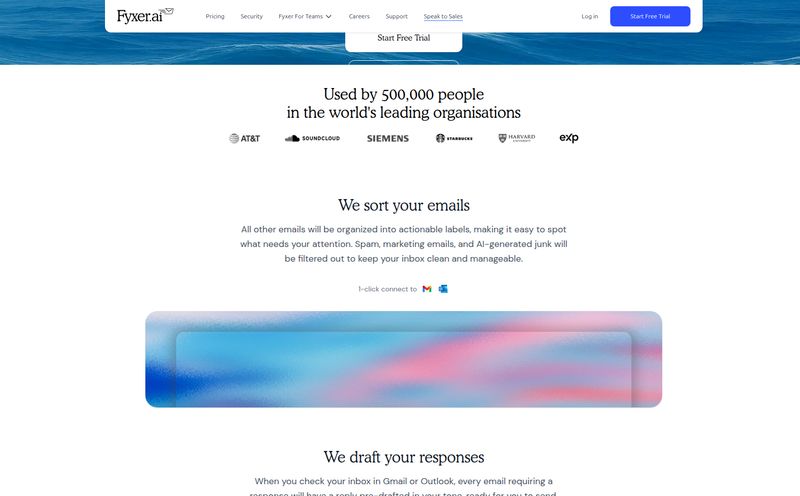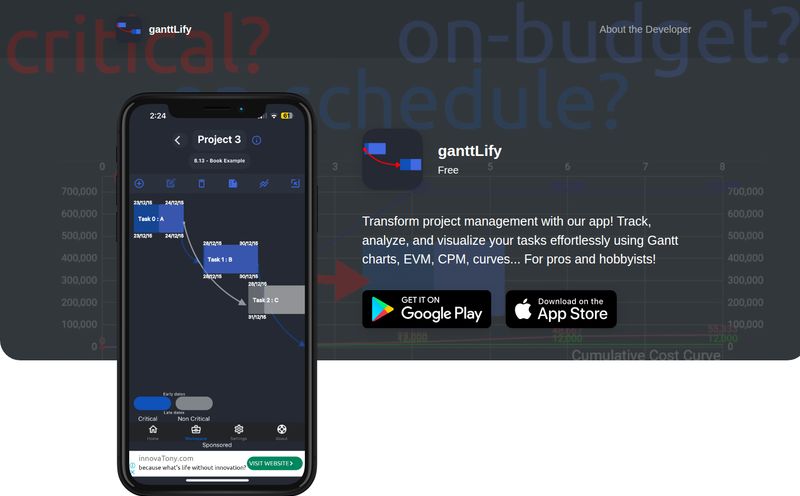I’ve been in the SEO and digital marketing world for a long time. Long enough to remember when “data-driven decisions” was a fresh, exciting idea and not just a buzzword plastered on every PowerPoint slide. And through it all, one thing has remained constant: the headache of actually getting to the data. You know the drill. You have a simple question, like “Which blog topics from Q2 drove the most newsletter sign-ups?”, and suddenly you’re in a week-long email chain with the data team, or worse, trying to wrestle with a Business Intelligence tool that feels like it requires a pilot's license to operate.
It’s a frustrating bottleneck. The insights are buried in there somewhere, but they're locked away. So when I stumbled upon a platform called Analytics Model, the premise alone made me sit up straight. Their pitch? An AI-driven platform that lets you just… ask your data questions. In plain English. No code, no complex filters, no waiting.
Is it too good to be true? Let's find out.

Visit Analytics Model
What on Earth is Analytics Model?
At its core, Analytics Model is an AI analytics platform designed to democratize data. That’s a fancy way of saying it’s built for everyone, not just the data scientists in the back room. Think of it less like a rigid, scary spreadsheet and more like having a conversation with a ridiculously smart data analyst who happens to be available 24/7.
You connect your data sources—and we'll get to that in a minute—and then you simply start asking questions in a chat interface. Stuff like:
- “Show me our sales trend in the Northeast for the last six months.”
- “What was our customer acquisition cost by channel in May?”
- “Which marketing campaigns had the highest engagement but lowest conversion?”
The AI crunches the numbers in the background and comes back not just with a number, but with what they call “expert-level insights” and visualizations. It’s a pretty bold claim, but it’s aimed squarely at solving that core problem of accessibility.
How Analytics Model Changes the Game
Okay, so the concept is cool. But how does it actually work? What are the moving parts that make this different from, say, a glorified Excel pivot table? It really boils down to a few key things that, in my opinion, are genuinely forward-thinking.
Talk to Your Data Like a Colleague
This is the main event. The natural language interaction is the secret sauce. For years, we’ve had to learn the language of computers (SQL, Python, etc.) to get data. This flips the script. The computer is finally learning our language. This single feature removes the single biggest barrier for most marketing managers, founders, and sales leaders. It means you can follow a train of thought and dig deeper in real-time during a meeting, rather than saying, “I’ll have to get back to you on that.” That’s a powerful shift.
All Your Data Under One Roof
Here’s the other killer feature. The website boasts over 500+ data source integrations. This is huge. One of the biggest pains in my career has been siloed data. Your Google Analytics data doesn’t talk to your Salesforce data, which doesn’t talk to your Facebook Ads data. Getting a complete picture of the customer is a nightmare of exporting CSVs and manual VLOOKUPs. By connecting everything into one place, Analytics Model acts as a central nervous system for your business data. It allows the AI to see the full picture and draw connections you’d almost certainly miss otherwise.
From Raw Numbers to Smart Visuals
Let's be real, nobody on the leadership team wants to see a spreadsheet. They want a story. Analytics Model seems to get this. It doesn't just spit back a number; it generates charts, graphs, and other visualizations to help you actually understand and present your findings. Based on the testimonial on their site from a Head of Marketing, this seems to be a major benefit—helping teams quickly see what’s actually working.
A Real-World Look: The Good, The Bad, and The Data
Now, I’m a professional skeptic. Every new tool promises to revolutionize my workflow. Some do, most dont. While I haven’t run my entire business through Analytics Model, I’ve seen enough demos and talked to enough folks in the space to get a good feel for where it shines and where you might hit a snag.
The biggest pro is undeniably the speed to insight. The ability to ask a spontaneous question and get an immediate, intelligent answer is a force multiplier for any team. It encourages curiosity and allows for a much more agile way of operating. You can test hypotheses on the fly without having to file a ticket with your BI team.
However, there are a couple of things to keep in mind. First, the setup isn’t magic. While it integrates with 500+ sources, you still have to… you know, integrate them. This will take some initial setup time and technical know-how to ensure the connections are solid and the right data is flowing. Second, and this is true for ANY AI tool, the output is only as good as the input. It’s the age-old principle of GIGO: Garbage In, Garbage Out. If your source data is a mess—inconsistent, incomplete, or poorly structured—the AI's insights will be equally messy. It’s a powerful engine, but you have to give it quality fuel.
The Big Question: What’s the Price Tag?
Alright, let’s talk about the elephant in the room. I scoured the website, I clicked around (and even hit a 404 page for my troubles), and I couldn’t find a pricing page anywhere. This isn’t a mistake; it’s a strategy.
In the world of B2B SaaS, no public pricing usually means one thing: it’s a custom, enterprise-focused solution. Instead of a tiered pricing page, you get a “Chat with an Expert” or “Request a Demo” form. This is exactly what Analytics Model has. This tells me their target audience isn't the solo blogger or small startup, but more established teams and companies with complex data needs and the budget to match. Honestly, it makes sense. The value is in solving big, expensive problems for mid-to-large-sized businesses. So if you're interested, be prepared to have a conversation with a sales rep to get a custom quote based on your specific needs.
Who is Analytics Model Built For?
Based on their own site and my analysis, this tool seems custom-built for decision-makers who are data-aware but not necessarily data-fluent. People like:
- CMOs and Marketing Managers: To finally connect campaign spend to actual revenue without a dozen spreadsheets.
- CEOs and Founders: For a high-level, real-time pulse on the entire business's health.
- Sales Leaders: To analyze pipeline performance, forecast accurately, and identify which reps or strategies are most effective.
- Product Managers: To understand feature adoption, user behavior, and how product changes impact business metrics.
If you're in one of these roles and you feel like you're flying blind, this is a tool designed to be your co-pilot.
Frequently Asked Questions
How is Analytics Model different from traditional BI tools like Tableau or Power BI?
The main difference is the interface. Traditional BI tools are powerful but have a steep learning curve, often requiring specialized skills to build dashboards. Analytics Model focuses on a natural language, conversational interface, making it accessible to non-technical users who can simply ask questions.
Do I need to be a data scientist to use Analytics Model?
Absolutely not. In fact, that's the whole point. It's designed specifically for business users, marketers, and leaders who need answers from data but don't have the time or skills to perform complex data analysis themselves.
What kind of data sources can I connect?
The platform supports over 500 integrations, which typically covers a wide range of business systems. Think CRMs (like Salesforce), advertising platforms (Google Ads, Facebook Ads), marketing automation tools, databases, and analytics platforms (like Google Analytics).
Is Analytics Model suitable for a small startup?
It's possible, but the lack of public pricing and the “Chat with an Expert” model suggests it's primarily aimed at mid-market and enterprise companies. The best way for a startup to find out would be to contact their sales team and discuss their specific situation and budget.
How secure is my company's data?
While not detailed on the main page, any platform handling sensitive business data at this level must have robust, enterprise-grade security protocols. This is a critical question to ask during a sales conversation – inquire about their compliance, encryption, and data handling policies.
Is This the Future of Business Analytics?
Look, the move towards conversational AI is happening everywhere, and business intelligence is a perfect fit. Tools like Analytics Model represent a shift away from data being a specialized department and toward it being a fluid, accessible resource for everyone. It's about empowering the people on the front lines to make smarter, faster decisions.
Is it a perfect tool? No such thing exists. You'll still need clean data and a thoughtful setup. But is it a massive step in the right direction? I think so. If you're tired of being bottlenecked by data requests and want to foster a more curious, data-literate culture in your team, then Analytics Model is definitely something you should check out.



